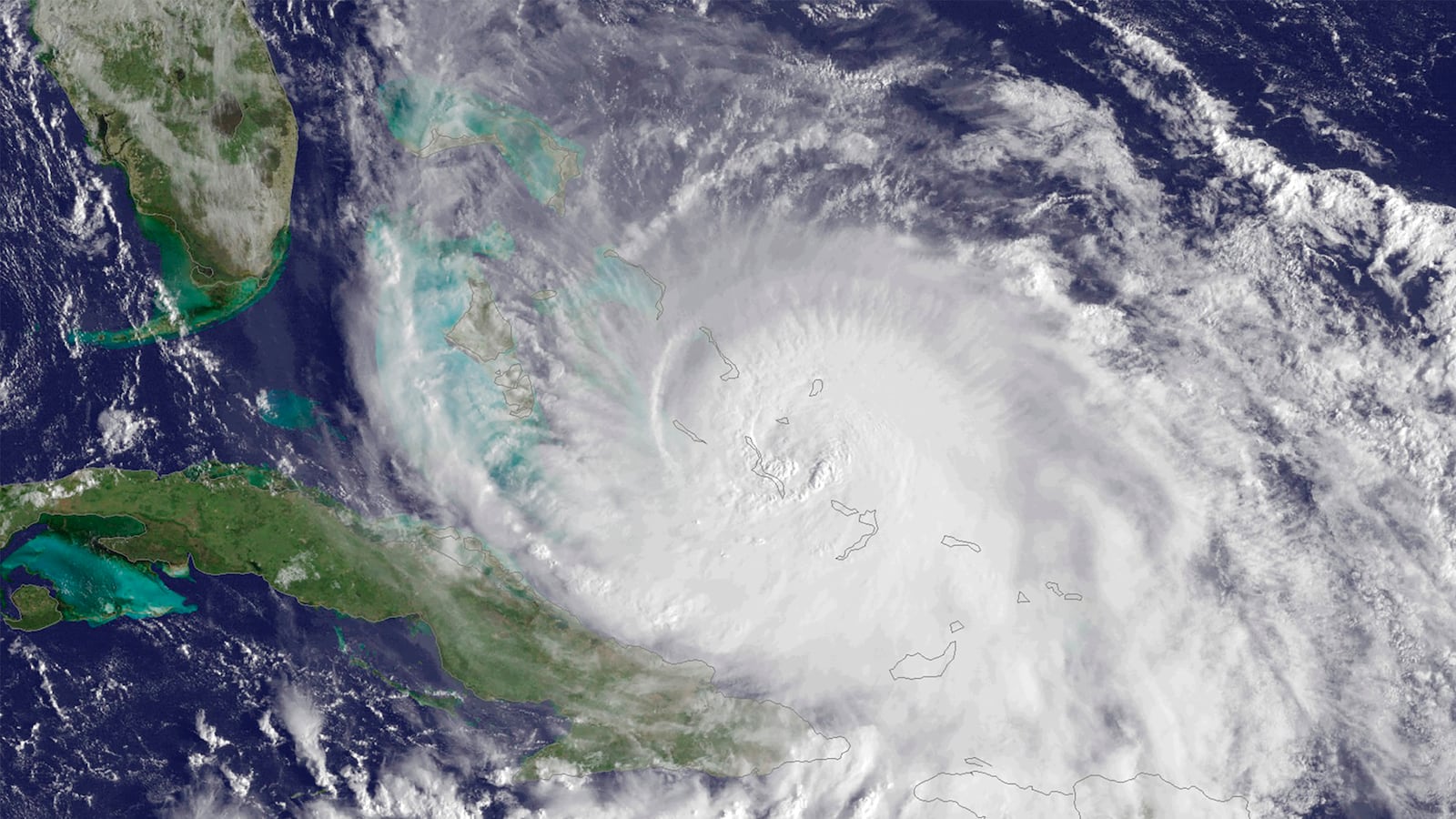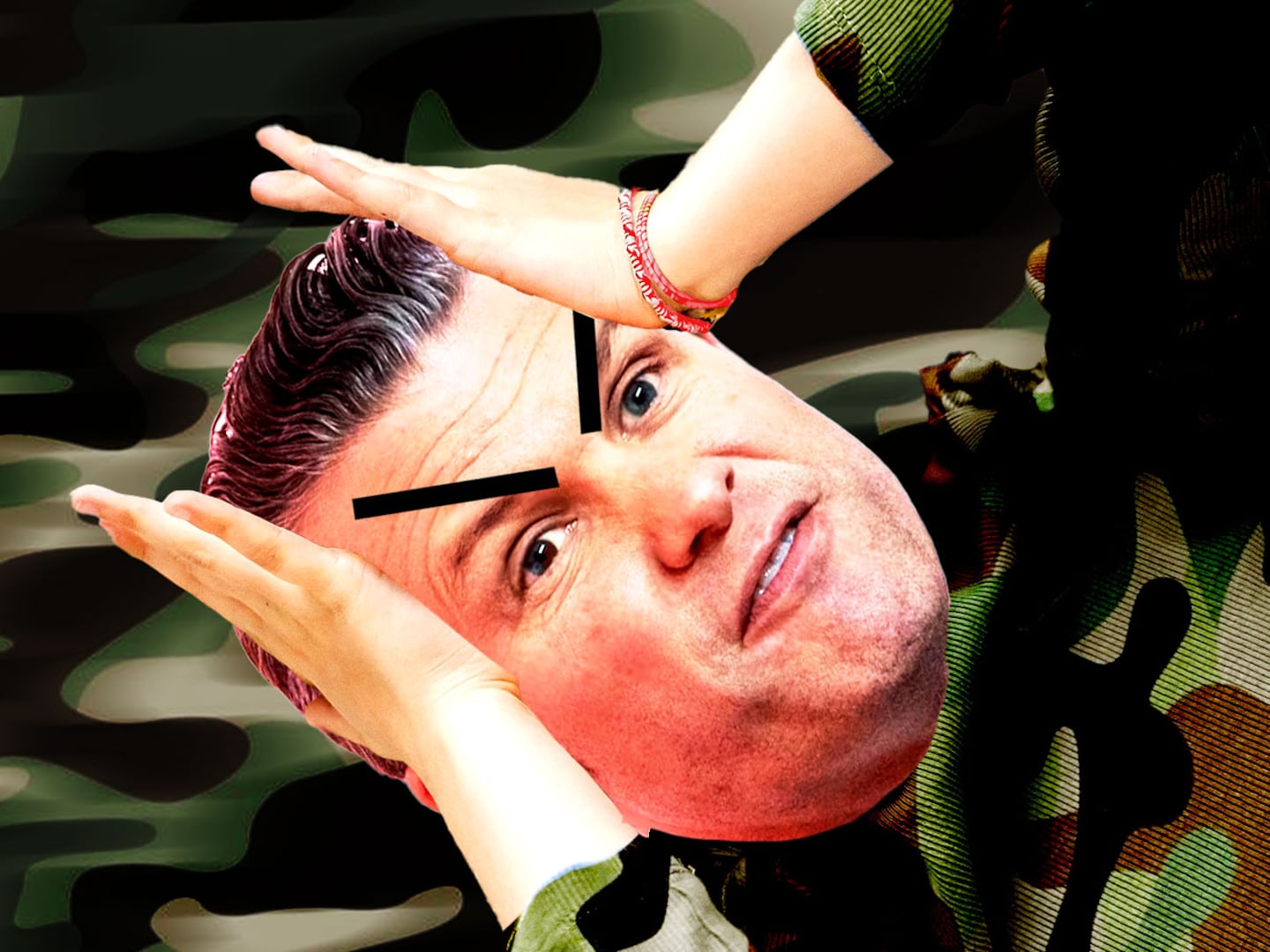As Hurricane Joaquin devastates the Bahamas and feints toward the east coast of the United States, and as American communities hunker down for superstorm potential, the connection to climate change is already clear. What’s more, a new study shows there’s a lot more of this sort of thing to come.
Already, Joaquin is being compared in advance to Superstorm Sandy, which devastated so much of the Atlantic shore, including New York City, only three years ago.
Such frightening anticipation may—or may not—turn out to be justified in this case. Chances are growing that Joaquin will swing north and out to sea, but predictions keep changing and hurricanes don’t always cooperate with prognosticators.
Taking every precaution to prepare for heavy rainfall and flooding, the governors of Virginia and New Jersey declared a state of emergency on Thursday as the approaching storm’s winds are topping 125 miles per hour. On Friday, rains from a combination of systems, including Joaquin, were flooding the Carolinas and forcing evacuations.
What’s all this about? The simple answer is “temperature.”
Hurricanes love warm water and the sea surface temperatures in Joaquin’s path are the warmest ever on record.
Thank humans for that. Last year broke all records for the hottest year and highest emissions in modern history. That’s our doing. Now 2015 is already bound to best last year’s record.
Sea surface temperatures are merely reflecting this trend, expanding the five oceans as they absorb more heat from the atmosphere. To date, sea levels have risen roughly four feet over the past several centuries, which makes for even more ferocious storm surges when they land on shore. (And the seas aren’t stopping; they keep rising.)
But warmer air, of which we now have plenty, also loves water, holding more and more moisture as we heat up the planet. Couple this trend with melting ice sheets and glaciers and you see that hurricanes, such as Joaquin, have no shortage of precipitation.
By now, in the United States, this trend shouldn’t surprise anyone. Hurricanes Katrina and Sandy should’ve sufficiently educated everyone on extreme weather trends. What people may not have realized, however, is that the “extreme” will be getting more “normal”—that is, more frequent—and that is a terrifying prospect.
A study published this week by the Proceedings of the National Academy of Sciences says that we’ll see superstorms (on a par with Superstorm Sandy) now every 25 years instead of every 500 years.
That means more flooding for vulnerable urban environments like New York City, whose transit system and power grids were completely shut down due to Sandy’s storm surge.
In fact, the densely populated Atlantic Coast is particularly prone to superstorms due to aggressive sea-level rise. This region experiences a rate three to four times the global pace of sea-level rise with several cities along the East Coast far exceeding the world’s rate. New York City’s sea level rise in the last century, for example, was well over a foot, while the global average was eight inches.
This is killing us financially—and literally.
Hurricanes are incredibly costly. In fact, seven of the ten most expensive natural disasters in America over the last three decades were caused by hurricanes. And the top two happened in the last 10 years, due, in no small part, to our quickly warming planet. The figures are astounding: Katrina was responsible for 1,322 fatalities and $125 billion in damage while Sandy witnessed 127 fatalities and $65 billion in losses.
And while state-based emergency declarations are essential, and resilience planning is paramount, we must do more to prevent rising temperatures and tides and corresponding extreme weather. Cutting our emissions quickly is critical, otherwise the air will get warmer and warmer and wetter and wetter, the seas will get hotter and higher and storms will get more severe. It’s that simple.






